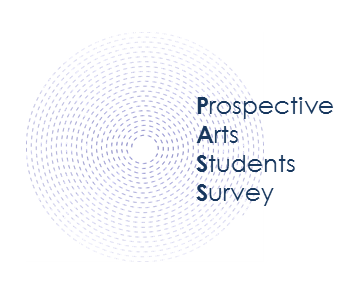What is the Prospective Arts Students Survey?
PASS is a national survey that explores how students choose particular fields of study, and how their decisions might be shifted in favour of Arts programs. The Prospective Arts Students Survey involved 30-45 minute qualitative interviews with more than two hundred students from across Canada, all of whom would be entering Grade 12 in September 2015. One-quarter of the sample is comprised of students who plan to attend an Arts faculty, one-quarter plan to not attend an Arts faculty, while the remainder are currently undecided between Arts and another faculty.
PASS was designed to answer three research questions: What attracts students to enroll in Arts faculties? What dissuades students from enrolling in Arts faculties? And, what can institutions do to persuade students to enroll in Arts faculties? Within these thematic categories, PASS will explore a number of sub-topics, including:
- What do university-bound students understand about different fields of study?
- How do students perceive their educational experiences in various fields?
- What do students know or understand about post-graduate outcomes?
- What factors matter most when weighing up decisions about fields of study?
- What do students understand, specifically, about Arts faculties, and what are their perceptions of this field of study?
- Would students be more likely to apply to Arts if certain programs were more prominent, or if they were packaged in different ways?
Why Should Institutions Participate in PASS?
Across Canada, Faculties of Arts face a three-fold challenge. First, over the past 5 years, the size of the secondary school graduating cohort has shrunk. In British Columbia, Grade 12 enrolment has decreased by 10%, and in Ontario enrolment has shrunk by 5%. These numbers are projected to continue to decrease until levelling-off in several years’ time. Consequently, all institutions and programs will be recruiting from a shrinking domestic pool, and competition for students will be fiercer than ever. This problem is exacerbated by a second, related challenge; namely, that Arts faculties across the country are losing students. On the west coast Arts enrolments have decreased by 8% in recent years, and this number is more than doubled in the Maritimes, where Arts enrolments decreased by 18% between 2010 and 2013.
The third challenge confronting Arts faculties in Canada centres on perceived value: for a variety of reasons, potential applicants no longer regard an Arts education as offering a worthwhile return on investment. Rightly or wrongly, the perception of Arts is that they are no longer very useful, and although administrators balk at attempts to reduce education to considerations of short-term employment, this is how the narrative is currently framed. When institutions ask students to pay for education (either privately or via tax dollars), students expect results, and when it comes to Arts, those results are not materializing.
Institutions thus face a choice: passively allow the market to run its course, and hope for the best, or proactively engage students to improve recruitment and increase enrolment in Arts faculties.
Who will be Interested in Joining PASS?
Deans of Arts, Registrars, Vice Presidents Academic, and other institution leaders looking to improve recruitment initiatives, and boost enrolment in Arts programs. Are you in charge of recruitment? Looking for impactful new ways to reach students who might be interested in Arts? Want to know what pushes students towards, and away from, enroling in Arts programs? The Prospective Arts Students Survey will provide you with the best and most current research available on how to use these channels to influence their decision-making process.
How will the Project Work?
The national student sample will be recruited by HESA. Once brought into the survey, and screened for eligibility, students will participate in 30-45 minute, open-ended, semi-structured telephone interviews. Rather than traditional quantitative analysis, our view is that the questions we are attempting to answer are too multi-layered to benefit from a quantitative approach. Therefore, the results will be treated more as qualitative research, only with a much larger sample than is typical for this kind of project. This will allow us to disaggregate findings by gender, residency status, geography, socioeconomics, high school grades, and preferred institutional characteristics, among other factors, while still being able to make generalizable conclusions about each sub-group.



